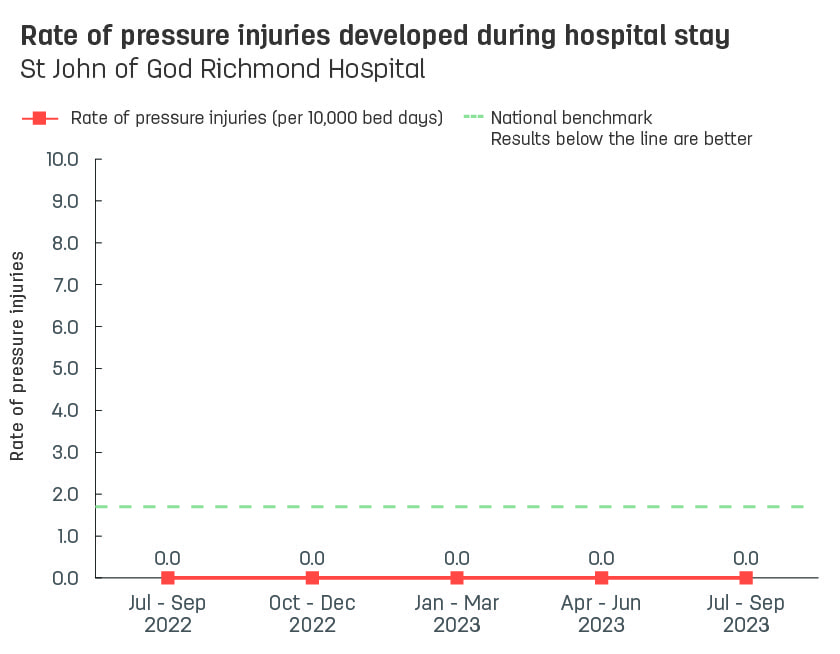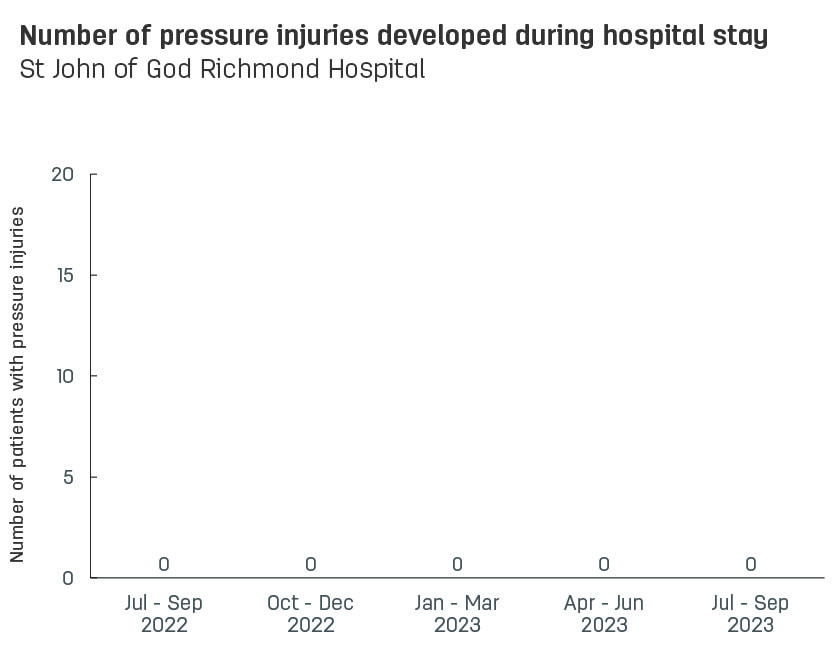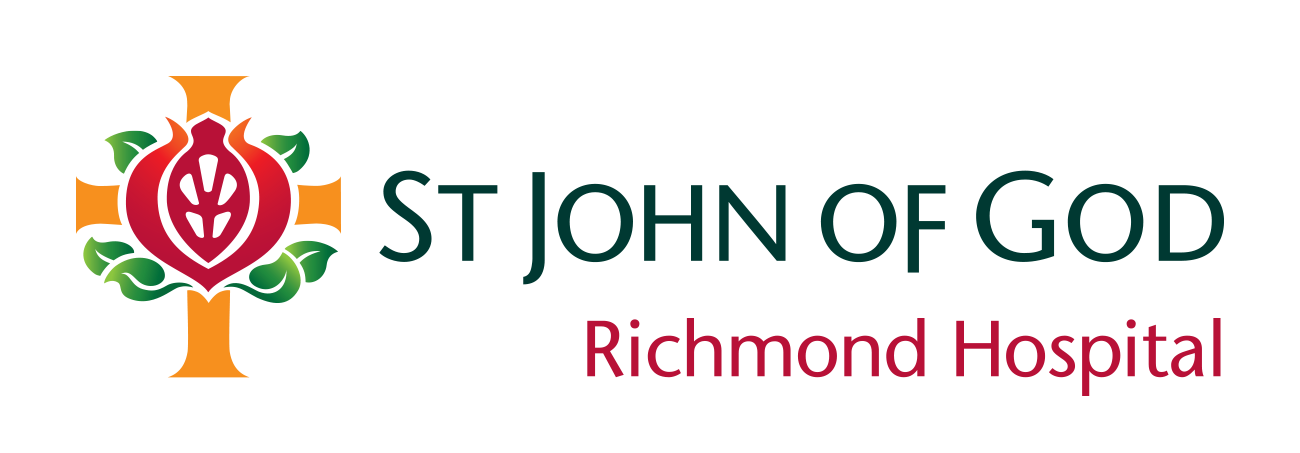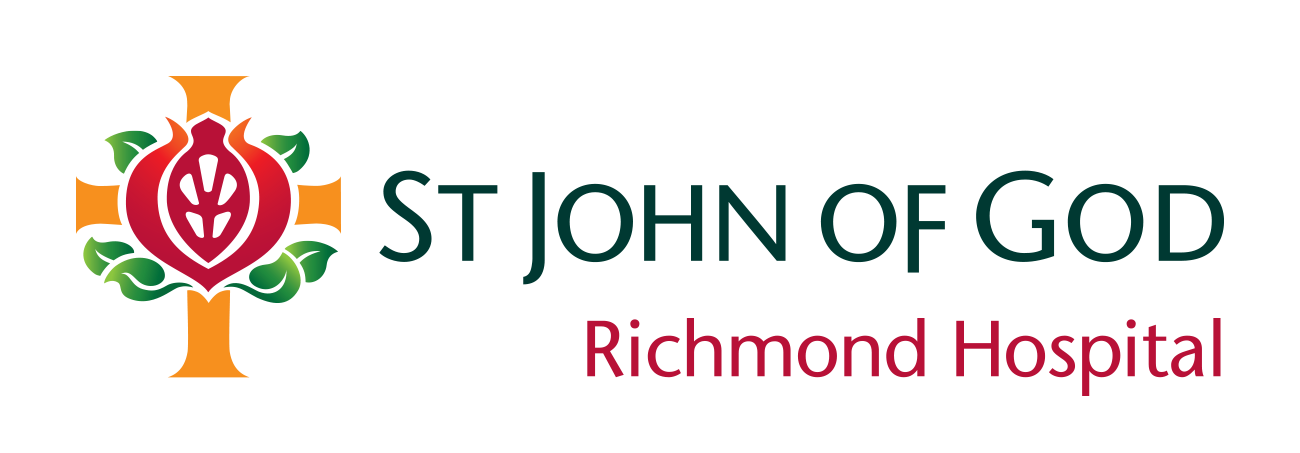- For patients and visitors
- Quality, safety and care
- Pressure injury prevention
Pressure injury prevention
St John of God Health Care uses a range of strategies to prevent and reduce pressure injuries in our hospitals.
A pressure injury (also known as 'bed sores') is damage to the skin caused by constant pressure on an area of the body. They can range from reddened skin to large open wounds.
Pressure injuries can be caused by staying in one position for too long. They usually occur on bony parts of the body, such as:
- the back of the head
- ankles
- tailbone
- hips
- heels
- elbows.
Patients can develop pressure injuries while staying in hospital. These can be painful, take a long time to heal, and slow down a patient's recovery.
What you can do
- Try not to stay in one position for too long.
- Stay active while in hospital.
- Ask a caregiver to help you move or walk around.
- Check your skin regularly for signs of redness, blistering, tingling or numbness.
- Be mindful of pain in bony areas of your body.
- Report any skin concerns or pain to a caregiver.
- Eat a well balanced diet and stay hydrated.
What St John of God Health Care does
- We assess risk of pressure injury for each patient.
- We create and monitor plans to prevent pressure injuries.
- We provide ongoing caregiver training.
- We conduct regular audits.
- We monitor the rate of pressure injuries in our hospital.
- We use equipment to prevent pressure injuries from occurring.
Visit the Clinical Excellence Commission (CEC) and Better Health Channel websites for more information on preventing pressure injuries:
St John of God Richmond Hospital's pressure injuries data


The graphs show the number of patients who develop one or more pressure injuries during their hospital stay.
The first graph shows the rate of these injuries, calculated per 10,000 inpatient bed days.
The second graph shows the number of patients who develop one or more pressure injuries.
The data in the graphs is displayed in three-month intervals. These time periods are noted across the bottom of each graph.
St John of God Health Care uses the Australian Council on Health Care Standards (ACHS) benchmark for monitoring pressure injuries.
The benchmark is 1.7 pressure injuries per 10,000 inpatient bed days.
Hospitals aim to be under the Australian Council on Health Care Standards (ACHS) benchmark of 1.7 pressure injuries per 10,000 bed days. The lower the score the better.
Our quality and safety activities

